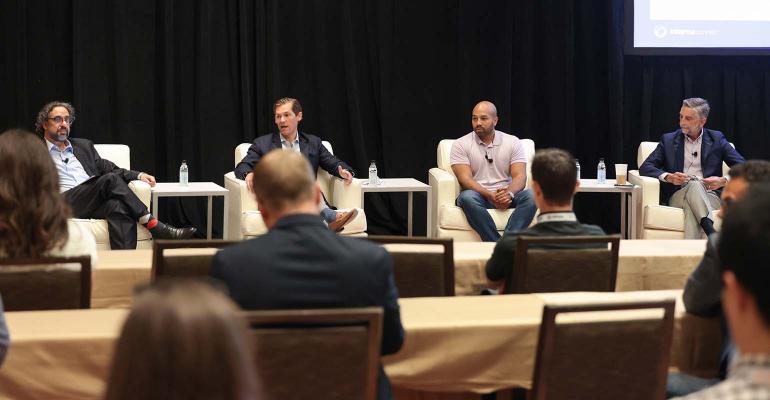Illiquid, private alternative investments have historically been reserved for institutional investors, such as public pension funds, endowments and foundations. In fact, the average endowment allocates some 50% to alternatives, versus just 3% for the average advisor, said Devon Drew, CEO of DFD Partners, speaking at the Wealth Management EDGE conference on Sunday.
But Drew cited a recent Schwab survey, which found one of the top holdings for investors ages 21 to 42 was the Grayscale Bitcoin Trust, a private placement, an indication, he argued, there’s more client demand for private investments than advisors think.
“When you think about how the next generation of investors are keen on risk and they have a longer runway for retirement. Private equity, private credit, real estate makes a ton of sense to be able to construct an alternative portfolio,” Drew said. “You’re also creating stickier assets. I personally think that if you’re an advisor and you’re not looking to increase your portfolios’ allocation to alternatives, it ends up being a business risk.”
“[Institutional investors] were investing in private markets because they did two things: they increased returns, and they lowered volatility,” said Dan Ziznewski, a director at Homrich Berg, an Atlanta-based RIA. “Now, with this evolution you’re seeing a lot more ways for advisors, for RIAs, to get access to truly institutional products. I think this evolution is just going to accelerate.”
John Norris, director of private wealth at CrowdStreet Advisors, a commercial real estate investment firm, said the 60/40 portfolio of stocks and bonds will be replaced by public versus private markets exposure.
“The 60/40 [portfolio] is going to be a public/private conversation in the next five years, if not sooner,” he said.
One of the biggest drivers of that, he said, is the change in the number of companies going public. In the last several years, the number of companies choosing to stay private has dramatically increased. He doesn’t expect that trend to reverse any time soon.
“You’re missing out on too many opportunities for better risk-adjusted returns by limiting yourself to being over-reliant on the public markets,” Norris said.
While the speakers at the conference, part of Wealth Management EDGE, recommended advisors consider some exposure to private equity, private credit and commercial real estate, Drew said advisors should also get educated about investments outside of those buckets, such as venture capital. He cited a recent example where an end client was demanding to invest in a venture fund.
“The advisor ruled against it, not because it wasn’t a good fund, but because they didn’t do the education,” Drew said. “I know we’re talking about putting together an alternative portfolio, but if you don’t at least have a solution for what the end client wants, possibly someone else will.”





